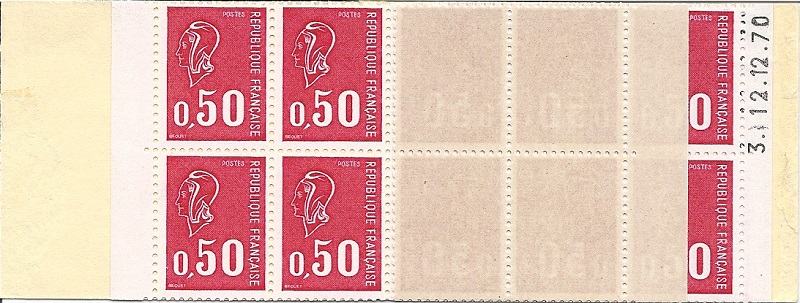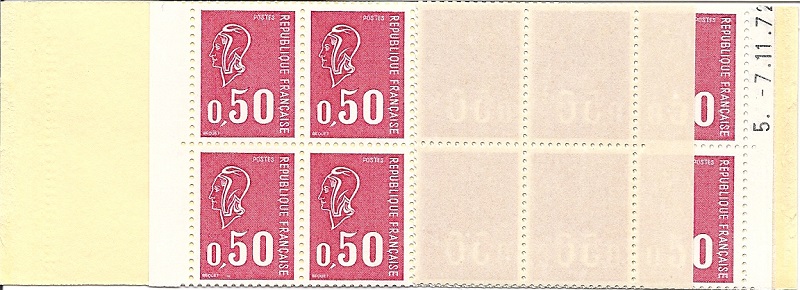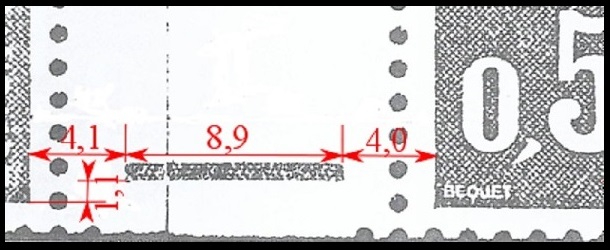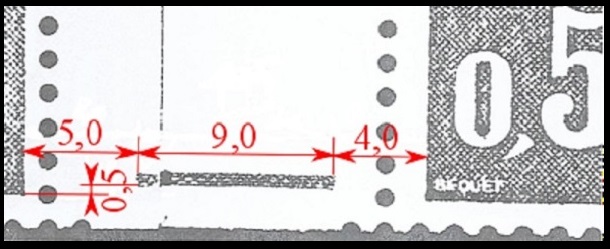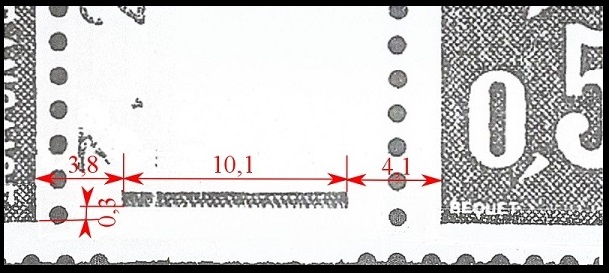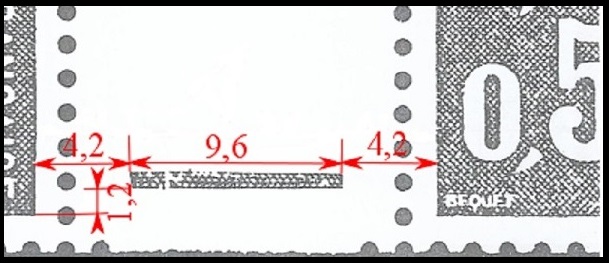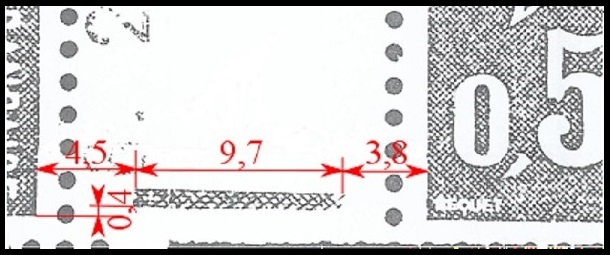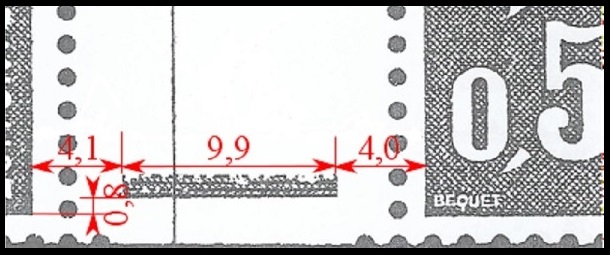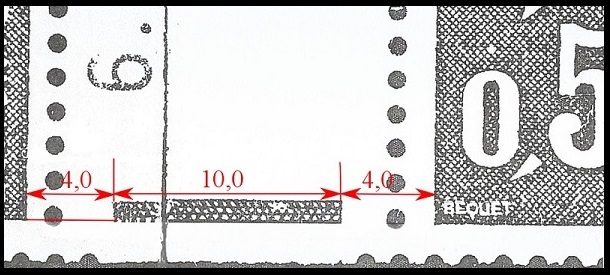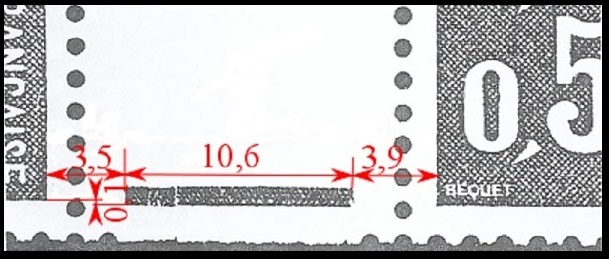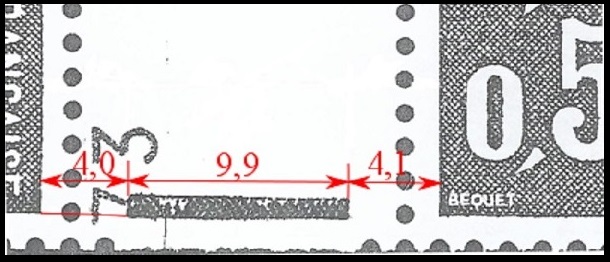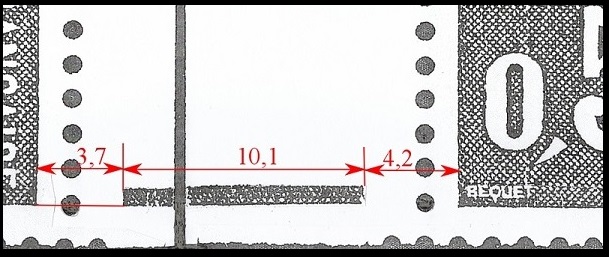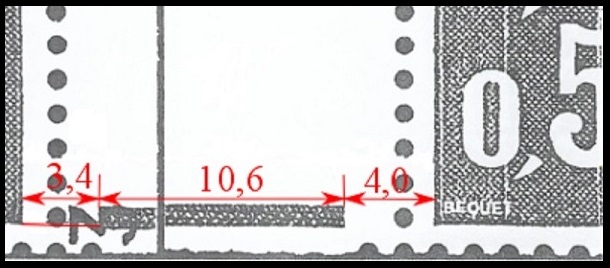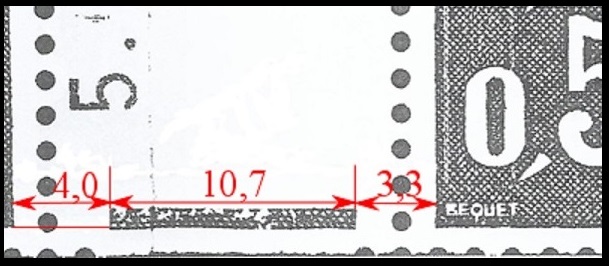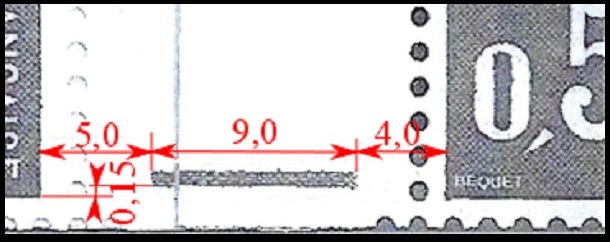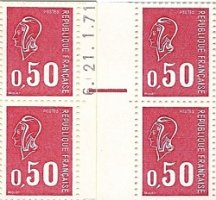
Introduction
Closed and folded booklets of 10 and 20 stamps 0,50F Marianne de Béquet, with or without phosphor bands, were produced with three types of cover: “Caisse d’Épargne Postale”, “Code postal sans trait” and “Code postal avec trait”. This gives a total of ten different types of booklets, numbered here C1 to C10 (as in some catalogues).
In this chapter, we will supply all known information about these booklets: used presses, gravure printing cylinders and packaging machines. Mentioned dates are those known to day, for example according to the Cours des carnets de l’ A.C.C.P.. There is no guarantee, however, that these dates cannot be improved.
Presses used
Stamps 0,50F Marianne de Béquet were printed on the presses TD6-3, 6-4, 6-5, 6-6 and 6-7 for the booklets of 10 stamps:
and on the presses TD6-3, 6-5, 6-6 and 6-7 for the booklets of 20 stamps:
Gravure printing cylinders used
Nineteen gravure printing cylinders served to print the stamps for these booklets. We will first describe their characteristics, according to the brochure Les carnets 0,50F Marianne de Béquet by J. RENARD.
But first, let us recall how these gravure printing cylinders are characterized: for every electronic mark associated with a gravure printing cylinder, four parameters, measured in millimetres and denoted L, D, G and B, are defined, according to the opposite figure.
The gravure printing cylinders used to produce the stamps having served for the preparation of booklets can be described by the following table:
B=0,4 | ||||
B=1,1 | ||||
B=0,5 | ||||
B=0,3 | ||||
B=1,2 | ||||
B=0,4 | ||||
B=0,8 | ||||
B=0,0 | ||||
B=0,0 | ||||
B=- 0,1 | ||||
B=0,0 | ||||
B=0,0 | ||||
B=0,0 | ||||
B=0,0 | ||||
B=0,0 | ||||
B=- 0,1 | ||||
B=- 0,1 | ||||
B=- 0,3 | ||||
B=0,15 |
The gravure printing cylinder number 19 was belatedly discovered (cf. J. RENARD’s article in the Bulletin du C.A.M.). Logically, it should have been numbered between 1 and 5. I have no other information about this gravure printing cylinder than its parameters.
I am now going to provide, in tabular form, an enlarged reproduction of all the electronic marks of these gravure printing cylinders, thanks to the brochure sur les carnets du 0,50F Marianne de Béquet by J. RENARD.
Packaging machines used
The covers of booklets were produced on the packaging machines number 1, 2, 3, 4, 5, 6, 7 and 8. Besides, there was a printing cylinder without number which could serve as replacement on any packaging machine. So, a number of covers of booklets do not possess packaging machine’s number (in what follows, I will refer to a packaging machine without number for this case, even if this term is inaccurate).






